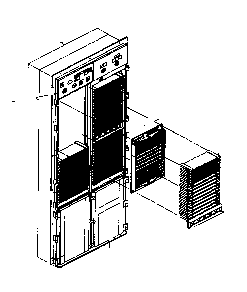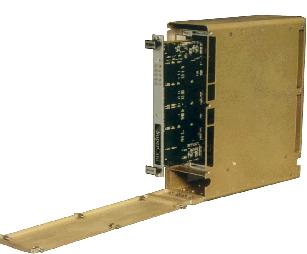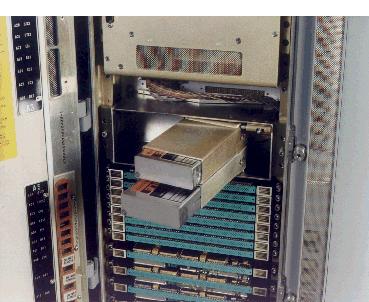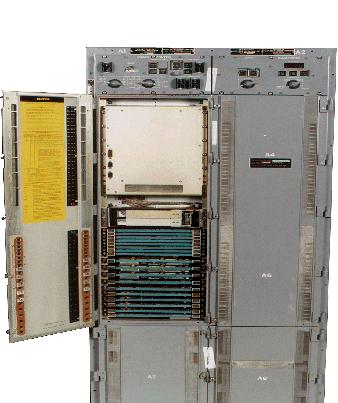



The AN/UYS-1(V) advanced development began as a Naval Air Development Center (NADC) project under the direction of NAVAIR. The competitive development contract was awarded in 1973 to IBM, Manassas, VA (which became Lockheed-Martin in 1996). After verifying the Advanced Development Models (ADMs) met all major performance requirements, some system components were redesigned to satisfy increased reliability, maintainability and lifecycle cost requirements. AN/UYS-1 limited production began in 1979 and was followed by full production in 1981. Program management responsibility transferred from NAVAIR to NAVSEA (later PEO (USW)) in 1985.
PMS428 identified a group of AN/UYS-1 electronic modules used in large quantities (termed High Volume Modules (HVM)) that would be the basis for a second source competition. Honeywell was competitively selected as the second source for AN/UYS-1 HVMs in 1987. Dual source awards were made in 1988 and 1989 with IBM being the successful offeror for the majority shares. In 1990, the Navy conducted a pre-award survey of Honeywell based on process control problems encountered during the initial production. The survey resulted in a non-responsibility determination for Honeywell, and all 1990 HVMs were awarded to IBM. Based on limited future market and financial investment required to fix production process problems, Honeywell declined participation in future AN/UYS-1(V) competitions. The second source procurement strategy concluded in 1990. All subsequent AN/UYS-1 procurements were been sole source with IBM. The table below presents a summary of AN/UYS-1 contracts.
Program Support |
|||
The AN/UYS-1, shown in the photo at right, is packaged in Lockheed-Martin (originally IBM Federal Systems) 4 PI technology. Each subunit is partitioned into modules which are approximately 2.2" by 6.9" in size, and there is a separate backpanel for each subunit. It is produced in two cabinet types: an air-cooled cabinet which contains a single AN/UYS-1, and a water cooled cabinet containing three AN/UYS-1s (TriASP) used in submarine applications. There are several different versions of the air-cooled cabinet type for different platforms.
The final production unit, ASP #1900, was delivered to the Navy on 31 May 1996. Nearly 1700 of these units are currently deployed in the Fleet. NUWC Detachment Concord, CA is the AN/UYS-1 In-Service Engineering Agent (ISEA) with the organic depot located at NADEP, Jacksonville, FL, while Lockheed-Martin remains the software support activity.

Because of end-of-life issues, a product improvement program has been executed to provide a COTS insert for AN/UYS-1. The Improvement replaces the Bulk Store subunit (backpanel, modules, and channel bracket) with a motherboard and also provides optional VME and hard-drive assemblies. The unit door is also replaced to ease access to the optional twin removable hard-drives. No other modifications to AN/UYS-1 subunits or recabling are required. The new hardware (with resident software) can be installed in the field in about 30 minutes. The table below delineates performanceimprovements also provided by the AN/UYS-1A COTS insertion. |
| Attribute | ||
| I/O Channels | ||
| Throughput | ||
Memory (Volatile)
|
||
| Storage (formatted) | ||
| Power (watts) | ||
| Weight (pounds) | ||
| Volume (inches) | ||
| MTBF (hours) | ||
| MTTR (minutes) | ||
The first segment of the COTS insertion, is to replace the existing backpanel with a motherboard as shown in the figure on the right. The motherboard will contain the existing Storage Controller function repackaged into Field Programmable Gate Arrays (FPGAs). Also on the motherboard, the existing Bulk Store will be replaced by a Dual Port Bulk Store (DPBS) thereby increasing the memory from 4 MBytes to 8M Bytes (and expandable to 16M Bytes). Replacing the existing Bulk Store will resolve an impending hardware component end-of-life issue. With the motherboard installed, the AN/UYS-1 will run all existing software applications without modification. |
 |
The optional second segment of the COTS insertion, is to install a four slot 6U VME assembly which will connect to the motherboard via a riserboard, which serves as the VME backpanel. The VME assembly is shown in the figure on the right. The motherboard will contain a function to interface the AN/UYS-1 control bus to the VME bus, and interface the second port of the DPBS to the VME bus. The VME insert can be populated with one single board computer and up to three DSPs as an adjunct processor or as an integral part of the AN/UYS-1 processor architecture. The COTS boards will support new software coded in "C" or Ada. |
 |
| The photo below, left shows the two removable hard-drives, which, if desired, can be added to the VME assembly. It can be used to store the preprocessor operational software and diagnostics, and provide capability for data storage and playback in near real time. The photo below, right depicts the AN/UYS-1 with the COTS insert installed. | |


There are several AN/UYS-1 users with increasing operational requirements for additional signal processing capacity, who are interested in the AN/UYS-1 Product Improvement. PMA290 (S-3B) and USAF Mobile Ground Terminal (MGT) have provided funding for development of this upgrade. PMA290 (P-3C) and PMS411 (AN/SQQ-89(V)1-6) are additional potential users of the AN/UYS-1 Product Improvement as a low cost supplement or alternative to their current COTS DSP efforts.
This upgrade is applicable to all existing AN/UYS-1 configurations except the submarine water-cooled version, which would require a different backpanel. A water-cooled enclosure could be developed if required, but no procurement funding has been provided to date for this upgrade version.